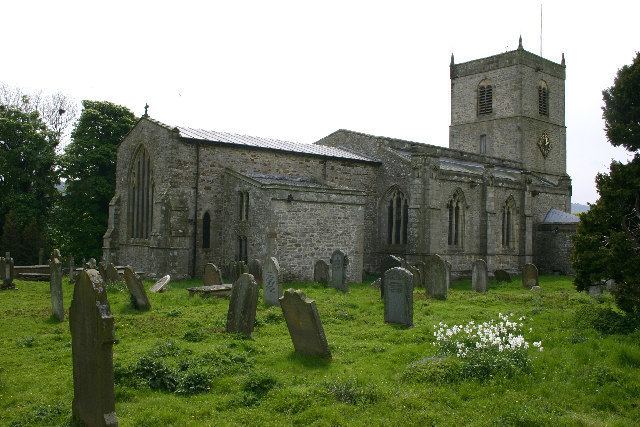OS grid reference SE 092 895 Denomination Anglican Opened 1719 | Country England Dedication Trinity Heritage designation Listed building | |
 | ||
Address Low Ln, Leyburn DL8 4HX, UK Similar Braithwaite Hall, Bolton Castle, Penhill, Constable Burton Hall, Jervaulx Abbey | ||
Holy Trinity Church is a redundant Anglican church in the village of Wensley, North Yorkshire, England. It is recorded in the National Heritage List for England as a designated Grade I listed building, and is under the care of the Churches Conservation Trust. Alec Clifton-Taylor includes the church in his list of 'best' English parish churches.
Contents
History
The present church dates from the middle of the 13th century, and is built on the foundations of an 8th century Saxon church. Additions or alterations were made in the 14th and 15th centuries, and the tower was added in 1719.
The church was restored in 1927 when the roof was renewed, and the whitewash on the walls was removed. This restoration revealed wall paintings depicting Jacob and Esau which were restored as far as possible. Rt. Revd. Lucius Smith, Bishop of Knaresborough re-opened it on 25 January 1928.
When the church was vested in the Churches Conservation Trust in 2006 a number of repairs were necessary costing about £125,000.
Exterior
The church is constructed in stone rubble with sandstone ashlar dressings. The roof is in Welsh slate, with lead on the chancel and the north porch. A number of carved Saxon stones are built into the walls. Its plan consists of a nave, with north and south aisles and north and south porches, a chancel with a north vestry, and a west tower. The tower has three stages, with buttresses on the bottom stage, and a two-light west window. On the south side is a stair turret. In the middle stage there are single-light windows on the west and south faces, a door on the east side, and a clock on the north face. The top stage contains two-light bell openings. On the summit, the parapet is plain and there are small obelisks at the corners. The south aisle has a two-light west window. The gabled south porch dates from the 15th century and has diagonal buttresses. Above its opening is a sundial dated 1846. Inside the porch are stone benches. The north porch dates from the 14th century; it is also gabled with diagonal buttresses. Above the doorway are coats of arms, and it also contains stone benches. On the south side of the church are buttresses with three double lancet windows, the middle one of which is over a priest's door. The east window has five lights, and on the east gable end is a cross. The vestry on the north side has two storeys. There is a two-light window on each storey. Inside the church is a tower arch, a chancel arch and a three-bay arcade, all dating from the early 14th century.
Interior
The church is considered to be as notable for its furnishings as for its architecture. In the chancel is a piscina with a trefoil head. On the chancel floor are two brass memorials. The choir stalls have carved ends dated 1527, and the communion rail dates from the 17th century. In the tower arch is a 15th-century rood screen. The nave contains the Scrope family pew with a 17th-century front and, at the back is a carved parclose screen from the early 16th century, that was moved from Easby Abbey at the Dissolution. The nave also contains 17th-century benches and box pews from the 18th century, an 18th-century double-decker pulpit, and an octagonal font dated 1662 with a cover wooden cover surmounted by a pineapple finial. On the walls are memorials, and on the north wall are fragments of medieval paintings. In the east window of the south aisle are fragments of medieval stained glass. Also in the church is a royal coat of arms dated 1701, and the standard of the Loyal Dales Volunteers. A wooden cupboard in the church is claimed to be a reliquary containing remains of Saint Agatha. The three-manual organ was built by Isaac Abbott of Leeds in memory of Letitia, Baroness Bolton (d. 4 January 1882) and opened on 19 April 1883., and later restored by Wood Wordsworth, also of Leeds. There is a ring of three bells. Two of these were cast in 1725 by Samuel II Smith, and the third was cast by Charles and George Mears of the Whitechapel Bell Foundry in 1847.
